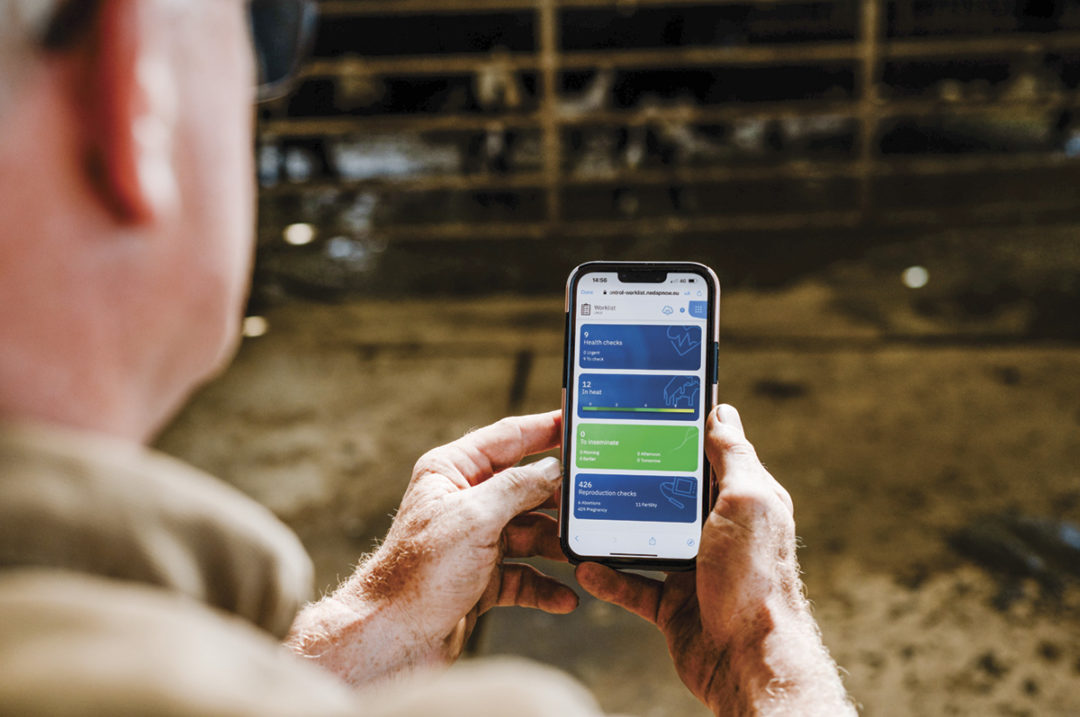Dairy farm management gets more complex every day. From data-driven herd management software to high-tech milking parlors and GPS-equipped tractors, your farm likely features systems that are more sophisticated than the technology behind the early space program.
While these tools are impressive in their capabilities to fine-tune animal care and better direct daily routines, technology management itself is becoming a growing challenge for many dairies.
If you do not already have a dedicated tech specialist on your farm, now is the time to decide who should take charge of managing these systems for your farm and integrating data to help your team make informed decisions.
Farming it out
Most dairies have not identified one person to manage their technology systems. Often, as systems are added, tech management evolves into administration by committee.
Generally, a herdsman takes on one piece of the farm’s technology, a dairy manager owns another piece, a mechanic or technician manages another and someone in the feeding department will also have a segment. Rarely is one person in charge of all systems and data.
This splintered approach is understandable, given the deepening role of technology at every level on dairy farms.
For example, wearable monitoring systems, milk meters, cow-location and sort-gate sensors, feed-management tools and many other systems require specialized attention and data management.
But, so do all the programmable logic controllers (PLC) in place for curtains, footbaths, manure handling and so much more – all the things you do not necessarily think of every day but are crucial to daily operations, cow comfort and productivity.
Find your tech vision
System communication and integration are often at the root of most farm-tech challenges. It is common for dairies to try to fit too many pieces together at once with no one in charge of the overall vision. However, you cannot simply add new technology to a dairy and assume it is going to work as intended without time and resource investments.
Make it your goal to integrate feed software, herd management, milk production data and any other data in one or two platforms, so you can see overall performance pictures quickly and easily.
As you evaluate your dairy’s technology and synching systems, the questions to answer are:
- What does the information flow need to look like on a daily basis?
- What do you need to manage every day?
- What are the steps required to get the needed action for results every day?
If technology is a sore spot, tasks will not get done or done correctly.
Establish a tech champion
Regardless of farm size, someone must be the champion of your dairy’s technology. Someone must own it and say, “This is my responsibility, and I'm going to do it.”
Think of your tech champion as an emerging position. Most dairies need to look for that person now to meet the push to implement multiple new tools on farms.
There is no magic formula to quantify when a dairy should invest in a specific person for this role. One rule of thumb is that when you recognize one person has too many responsibilities in their current role, it is time to consider adding a technology-champion position.
Another indicator is when technology starts to fall by the wayside. For example, cows are not entered into cow-management software as they should be, fans are not running correctly and so on. Find the right balance to make sure technology, operations and people are working in concert and nothing is getting missed or pushed aside.
When selecting a technology champion, avoid choosing someone who only wants to own part of the system or is unable to commit full-time. The role requires discipline to follow through, as well as the ability to speak the language of many technologies.
If you do not have an overall manager for current and new tech, consider that you are adding one more thing to the already full plate of your herd manager, dairy manager or site manager.
Doing so is a disservice to that person, your herd and your vendor partners if this individual does not have the time, knowledge or inclination to add additional responsibilities.
Add value
A cohesive tech vision and tech champion can add significant value to your dairy.
In one instance, the technology manager for a large dairy helped increase rotary throughput by several hundred cows per day, in addition to creating and managing daily reports for the dairy owner to easily monitor key performance indicators.
The increase resulted from data monitoring, which indicated shifting parlor procedures would increase the efficiency of milking personnel and milking time.
Additionally, the tech manager helped the farm better prepare for scheduled rotary equipment maintenance. On this dairy, an hour of downtime cost the farm about $20,000 in lost milk revenue.
To minimize the loss, the dairy team generated work lists a few days ahead of time to ensure everyone was prepared to get herd work done before maintenance occurred. Harnessing the technology to build needed reports to get cows sorted, move up sort times and move up breeding meant the dairy operated at peak efficiency, regardless of the situation.
In another example, a dairy mixed and fed 2 million pounds of feed a day. With monitoring technology in the commodity barn connected to the feed program, the dairy could tell feed mixing and delivery times down to the minute – almost to the second.
Because of its tech vision and the follow-through of a tech manager, the farm realized it was wasting time based on the order of pens being fed. By reworking the loading and delivery schedule, they were able to optimize labor and equipment hours as well as achieve more consistency in load mixes.
Honing your dairy’s tech vision and developing a tech champion empowers your farm to drive technology to help accomplish your goals, rather than allowing disjointed systems to derail key objectives.







